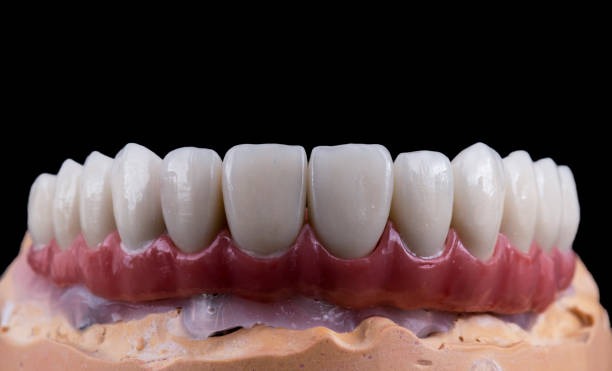What Are Fixed Dental Restorations?
Fixed dental restorations are permanent solutions to replace or restore damaged, decayed, or missing teeth. Unlike removable options such as dentures, fixed restorations are cemented or anchored into place, offering greater stability and a natural feel. Common types include crowns, bridges, and implant-supported devices, all aiming to restore function and appearance. These restorations help preserve alignment, improve oral health, and prevent further deterioration of surrounding teeth and bone.
Advanced restorative options provide more comprehensive solutions for individuals experiencing significant tooth loss. One such approach involves all-on-4 dental implants, which support a full arch of teeth using just four strategically placed implants. This method enhances stability and minimizes the need for bone grafting, making it a practical alternative for many patients. Fixed restorations like this improve daily function and long-term oral health by preserving jawbone integrity and supporting overall facial structure.
Why Durability Matters in Dental Restorations
Considering the financial and emotional investment that comes with dental restorations, durability becomes a top priority. Patients want to know that the treatment they choose can withstand the rigors of daily life, from chewing tough foods to enduring years of use without constant repair. Fixed restorations, fabricated from advanced ceramics, zirconia, or precious metal alloys, are specifically engineered to provide decades of service. When paired with good oral hygiene and regular dental visits, these solutions often significantly outlast temporary or removable prosthetics.
The financial benefit is also crucial. A well-placed crown or bridge can last well over ten years; many implants can remain viable for twenty years or more. This means less time spent dealing with replacements and more time enjoying life with a secure and comfortable smile. Many patients find that investing in durable restorations pays off over time, as it minimizes ongoing appointments and additional expenditures linked to recurring repairs or replacements.
Key Long-Term Benefits for Patients
- Improved Chewing and Digestion: With fixed restorations, patients report they can eat virtually any food, from crunchy apples to thick cuts of steak. Having reliable teeth helps break down food efficiently, making digestion smoother and reducing the likelihood of gastrointestinal issues resulting from improper chewing.
- Greater Speech Clarity: Unstable or missing teeth often cause difficulties with pronunciation or lead to embarrassing mishaps such as whistling or slurring words. Fixed options remain anchored and don’t shift unexpectedly, supporting clear and confident speech in daily interactions.
- Jawbone Preservation: Restorations incorporating implants are uniquely beneficial because they stimulate the jawbone like natural tooth roots. This prevents bone atrophy and helps maintain facial contours, preserving both oral health and one’s natural appearance as time goes on.
- Natural-Looking Results: Modern dental laboratories’ ability to carefully match color and shape means these restorations blend seamlessly. Others often can’t distinguish which teeth have been restored, contributing to higher patient confidence and satisfaction.
- Reduced Daily Maintenance: Unlike removable appliances that require soaking, adhesives, or special cleaning regimes, fixed solutions need only the same care as natural teeth—brushing, flossing, and regular dental visits—making them a convenient choice.
These combined benefits promote physical wellness and emotional and social confidence, profoundly impacting the everyday quality of life for countless people worldwide.
Oral Health and Quality of Life
The connection between strong oral health and overall well-being is clear. Untreated gaps can lead to shifting teeth, heightened risk of gum disease, or even changes in bite that cause headaches and discomfort. Fixed dental restorations prevent or significantly reduce the impact of such complications by filling these spaces and restoring function.
According to recent reports about dental implant quality-of-life outcomes, individuals with permanent dental replacements consistently experience less anxiety in social situations. The ability to laugh, smile, and communicate without holding back translates to better relationships and overall life satisfaction. For many, dental health improvements even lead to improved self-care habits as increased confidence breeds new motivation in other areas of their lives.
Comparing Restoration Options
Selecting the proper fixed dental restoration depends on a patient’s case and needs. A single damaged tooth may require a crown, while multiple missing teeth might need a bridge or a full-arch solution using dental implants. Crowns offer exceptional protection and appearance for weakened teeth, allowing them to withstand the forces of biting and chewing over time. On the other hand, bridges provide a practical and aesthetic way to span small gaps, relying on neighboring teeth for stability while restoring a natural look to the smile.
Implant-supported restorations, like those seen in all-on-4 procedures, are often recommended for patients needing to replace several teeth or an entire arch. These achieve superior stability, help prevent bone loss, and can last for decades—a testament to their comprehensive function. Each restoration type is built to return comfort and reliability to the patient while minimizing daily inconveniences and maximizing long-term health.
What the Research Says
The body of clinical evidence affirms the lasting advantages of fixed dental restorations. Long-term studies reflect that dental implants regularly exceed 95% survival rates over ten years, often remaining in function even longer when oral hygiene is maintained and risk factors are managed. Meanwhile, crowns and bridges have also demonstrated impressive longevity and high satisfaction rates among patients, making them a worthy option when implants may not be suitable.
Organizations like the World Health Organization emphasize the far-reaching benefits of robust oral health, connecting it directly to improved diet quality, self-esteem, and reduced risk of secondary health issues. The surge in new materials and digital dental technologies means that today’s fixed restorations are more comfortable, precise, and lifelike than ever before, creating a better future for those facing tooth loss.
Maintenance Tips for Longevity
While fixed dental restorations require less daily hassle than removable dentures, they still depend on proper care for optimal function and lifespan. Patients should establish a thorough oral hygiene routine that mirrors caring for natural teeth. Gentle brushing at least twice daily using a soft-bristled toothbrush and fluoride toothpaste helps remove plaque and prevent decay around restorations and natural teeth.
- Brush thoroughly each morning and night with a soft-bristled brush to minimize plaque buildup.
- Use dental, interdental brushes, or water flossers to clean between teeth and around bridges or implant posts.
- Avoid biting on tough objects, such as pens, ice, or hard candy, as this could damage restorations.
- Schedule regular check-ups and dental cleanings—typically every six months—so professionals can monitor the fit and health of your restorations.
- Report any discomfort, looseness, or damage to your dentist immediately. Early attention often leads to easier, less invasive fixes.
By following these simple strategies, patients can extend the life of their fixed dental restorations while maintaining optimal oral health and comfort.



